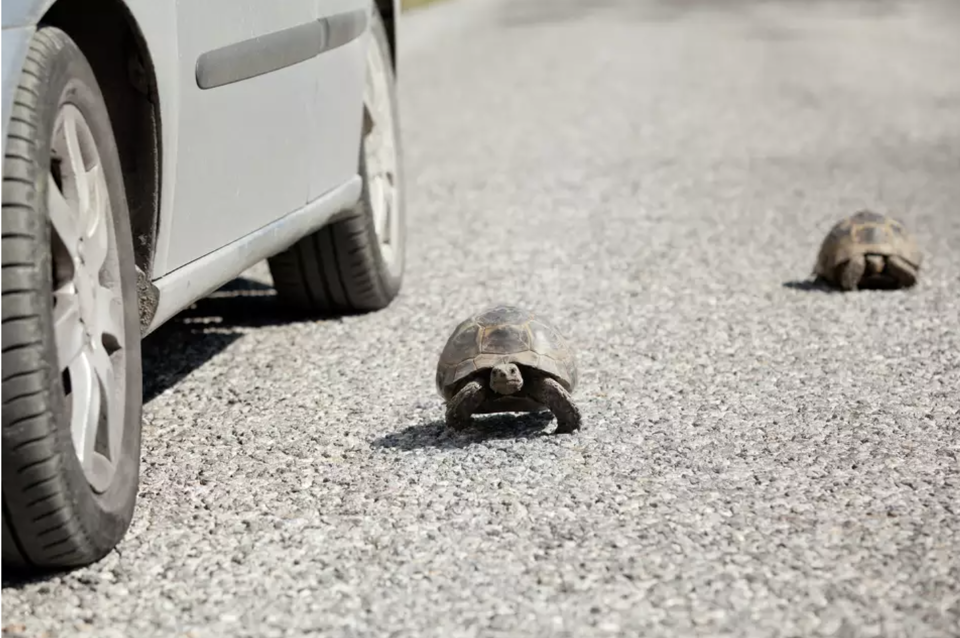Texas roads now featuring lovestruck turtles ignoring traffic laws
As spring blankets Texas in a wave of blooming wildflowers and budding trees, another seasonal sign is quietly creeping across roads and highways: turtles on the move. Oblivious to traffic and speed limits, these slow but determined travelers are part of a natural rhythm tied to the warmer months: a journey driven by the urge to mate and nest.
"Common freshwater turtles typically begin mating between March and July," said NRI's Dr. Danielle Walkup, a research assistant professor, in a Texas A&M AgriLife news release. "Later in the spring and early summer, they'll start moving and searching for a good nesting place."
The Lone Star State is home to roughly 26 species of semi-aquatic freshwater turtles. Around May, females begin leaving ponds, lakes, and streams, venturing onto land to lay eggs. Ideal nesting sites are usually elevated patches of moist soil just far enough from water to keep their nests safe from flooding.
Unfortunately, these natural paths often intersect with man-made ones. "They're seeking an area that is elevated to some degree," said NRI's Toby Hibbitts, an instructional assistant professor in the Texas A&M Department of Ecology and Conservation Biology. "Many times, a road built across a waterway is the highest point nearby, so females will build their nests right next to the road."
This behavior places cold-blooded commuters at significant risk. Even those not nesting near roads must sometimes cross them, and the result can be fatal. In a 2016 study published in Herpetological Conservation and Biology, researchers documented a staggering 850 road-killed turtles over four years along a single stretch of road near an East Texas lake. The majority of the deaths occurred during the breeding season.
 Turtles may need some human assistance to cross the road safely.
Turtles may need some human assistance to cross the road safely.
"The causeway is attractive to female turtles as a nesting site, and the use of the roadside causes an increased risk of road mortality," read the study. "To our knowledge, this site has the highest documented rate of unmitigated turtle road mortality in North America."
To help minimize the toll, wildlife experts advise drivers to be alert, especially in rural areas and near bodies of water. If you see a turtle on the road, slow down and steer around it. For those who want to help, Walkup recommends pulling over in a safe spot and checking for traffic before approaching the turtle.
To move it safely, gently grasp the turtle on either side of its shell and carry it across the road in the direction it was heading. It's crucial not to redirect turtles, as many return to the same nesting site each year.
Snapping turtles, however, require special care. Larger and more defensive, they can bite when threatened. Hibbitts warns never to pick up a snapping turtle by its tail because it can injure them. Drivers can use a car mat to slide the turtle across the road without direct handling.
"If I'm moving one, I usually pick it up partially off the ground with the tail, then place my hand on the underside of the shell and hold a back leg," Hibbitts said. "They do have long necks, so you want to try to avoid the front half of a snapping turtle."
--
Adapted from an originally published article in the Houston Chronicle




